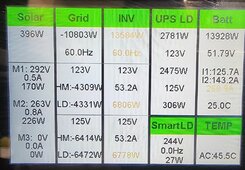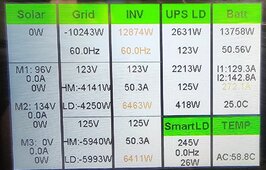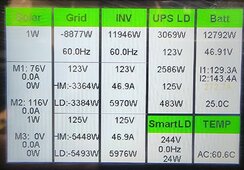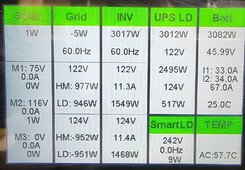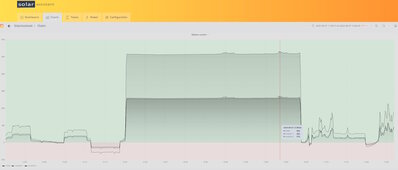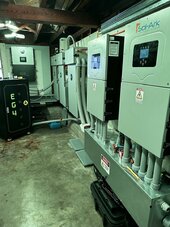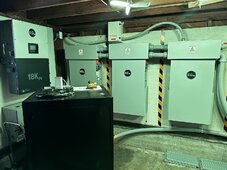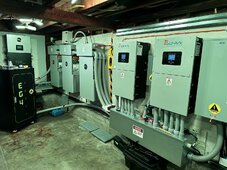Lt.Dan
Solar Wizard
Just wanted to bridge this off of the Midnight Solar thread to keep it tidier.
I have stressed tested the Sol-Ark 12k at max capacity for a year or so, and it definitely had heat problems. Hence why I updated to the 15k. I have not had a heat related issue since the switch. Temps stay under 60*C almost all the time.
But to really test that, I want to run it tonight, and dump power back to the grid at max sell-back power, to deplete my battery bank entirely. This will let me test 2x things;
1) Temps, we'll see how much they rise, and if they become a problem,
2) True Output Current, and for how long max current can be held.
I can post the charts from Solar Assistant showing Current (A) and Wattage (W), from a full battery, to dead.
The naming scheme has been beaten like a dead horse. I'll leave it at that. Everyone has their opinion, and we all know what opinions are like...
Should be fun though
I get where you are coming from on the 275A rating (vs. 250A or 210A etc.), But has anyone done long term amp tests on Sol-Ark 15K and/or Eg4 18K? I have heard that on charging, the 15K is quickly derating charge current to less than 275A due to temps. In fact one person that I know with a bit of 15K experience (dealer with SA15K in their showroom, fully off-grid) looked at me as if I was joking when I mentioned 275A of charging from a 15K.
I would imagine discharge amps would end up with similar results to charge amps, as far as temp derating goes.
Forgive me if this has been discussed in other posts ion the forum. I didn't even check.
Another thing to consider, as far as kW of output. Despite the fact that it's possible to run 17s configuration to gain on output, the ratings need to be based on "normal" installs. And 17s will not be a "normal" install. Any "48v" LifePo4 battery that someone buys "off-the-shelf" will be 16s. And as such, ratings NEED to be based off that.
I agree with @timselectric that you should not need to manipulate things to get nameplate ratings!
It all gets a little fuzzy with an AIO, because of how the flow of power is inside of them. But at the end of the day, whatever the nameplate says, should be "nominal output", eg: output capability under worst case scenarios, NOT best case scenarios, let alone "unique/custom" scenarios!
I have stressed tested the Sol-Ark 12k at max capacity for a year or so, and it definitely had heat problems. Hence why I updated to the 15k. I have not had a heat related issue since the switch. Temps stay under 60*C almost all the time.
But to really test that, I want to run it tonight, and dump power back to the grid at max sell-back power, to deplete my battery bank entirely. This will let me test 2x things;
1) Temps, we'll see how much they rise, and if they become a problem,
2) True Output Current, and for how long max current can be held.
I can post the charts from Solar Assistant showing Current (A) and Wattage (W), from a full battery, to dead.
The naming scheme has been beaten like a dead horse. I'll leave it at that. Everyone has their opinion, and we all know what opinions are like...
Should be fun though



